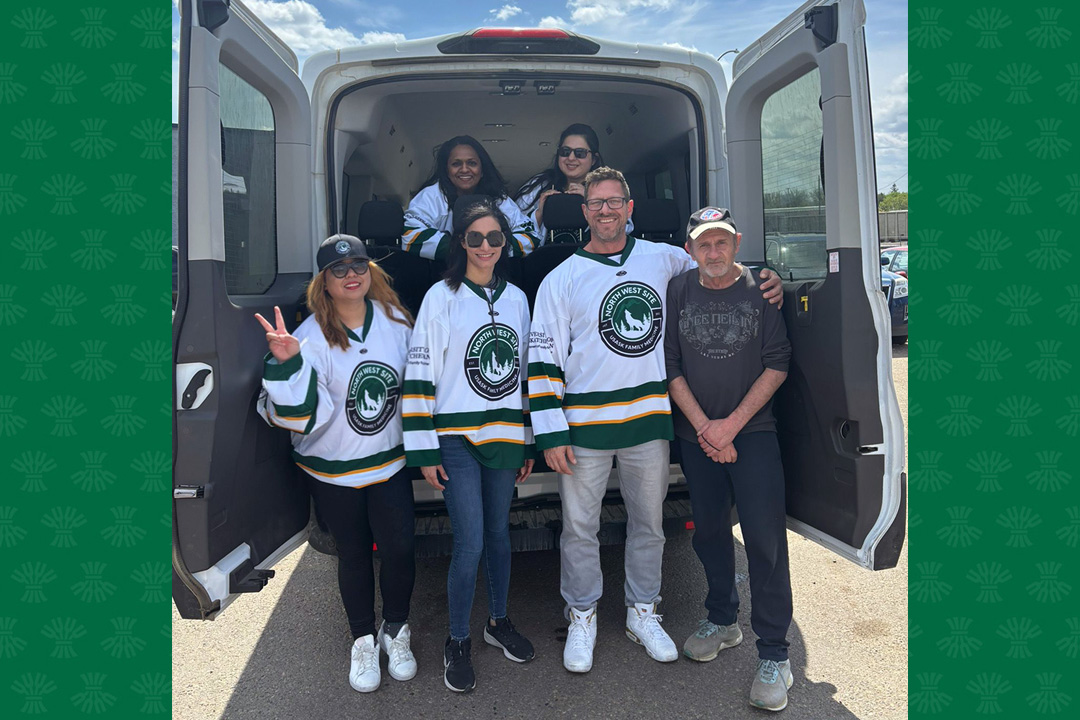
Building Bridges: Northwest Family Medicine Site
Dr. Anum Ali shares her experience with the Northwest Family Medicine Resident Community Outreach Committee.
By dr. anum ali, Family Medicine Resident - PGY1The idea to form an outreach advocacy committee came from our site director, Dr. Aaron Prystupa, and site administrator, Kristen Huebner. Their vision? To launch meaningful projects—like food drives—that directly support our local community. When I first heard the idea, I thought, “Sure, how hard could it be?”
Well.
From the very beginning, this has been a full-on team effort! Residents, site leadership, local businesses and community partners have all played critical roles.
Organizing our first food distribution was exciting, a little nerve-wracking and a huge learning experience. Not everything went smoothly. Honestly, I never thought about how essential scissors would be—especially when trying to open food packages with freezing fingers! Lesson learned: we’re much more prepared now.
We decided early on that perfection wasn’t the goal—progress was. We started small; we picked the third Saturday of each month and began by offering coffee and snacks. But when winter came, our residents enthusiastically decided to provide warm clothing, too.
One of the most heartwarming aspects of this project has been the support from local businesses. The Blend, a local restaurant, donates individually wrapped sandwiches and coffee every month. Their generosity ensures everything is safe, hygienic and inviting. Thanks to the RAAM Clinic, we had transportation and support available so every resident who wanted to volunteer could participate safely.
Another important person is Fred—a community member with lived experience who joins us on every drive. Fred’s willingness to share his time and help us connect to a marginalized population has been absolutely invaluable.
If you ever doubted the kindness of strangers, just spend a Saturday with us in North Battleford.
Why this matters to me—and to us all
Our goal goes beyond food and clothing. As resident physicians, we know how vital it is to connect with the people we serve. By stepping outside the clinic, we build trust, break down barriers and foster a real sense of belonging. The community response has been overwhelming. We’ve received heartfelt thanks from community members and local physicians who’ve told us how much this outreach means. Not everyone agrees with our methods, but that’s why it’s even more important to fight stigma—starting with us residents, then expanding to the community.
We want future residents to feel that same connection—to see North Battleford not just as a residency site, but as a community they’re part of. For me personally, it’s about showing up, connecting, and being human first–and a doctor second. Honestly, standing in the cold awkwardly pouring coffee with frozen hands probably made me more approachable than any clinic visit ever could.
Looking ahead
Our future plans include some exciting initiatives that we are considering.
- Creating an Amazon Wish List for easy, direct donations of supplies.
- Reducing our environmental impact by using compostable packaging and minimizing food waste.
- Expanding our advocacy with more community-centred events, inspired by the creative energy of our fellow residents.
For now, I’m incredibly proud of what we’ve started. I hope this small initiative becomes something lasting: a culture of empathy, service, and connection that continues long after we graduate Residency. I enjoy seeing smiles and watching my fellow residents bond while shivering and stuffing bags with food—this is the kind of work that reminds you why you chose this “helping people” career in the first place.
I also hope that future residents see North Battleford not just as a “regional site,” but as a community worth investing in—with heart, humility, and maybe a few extra hand warmers.
